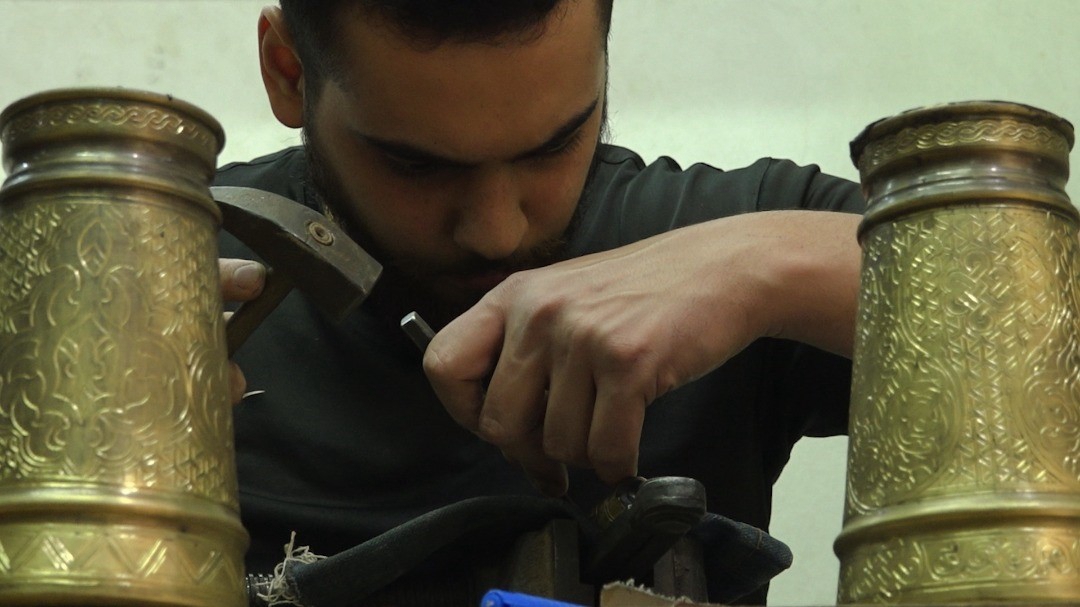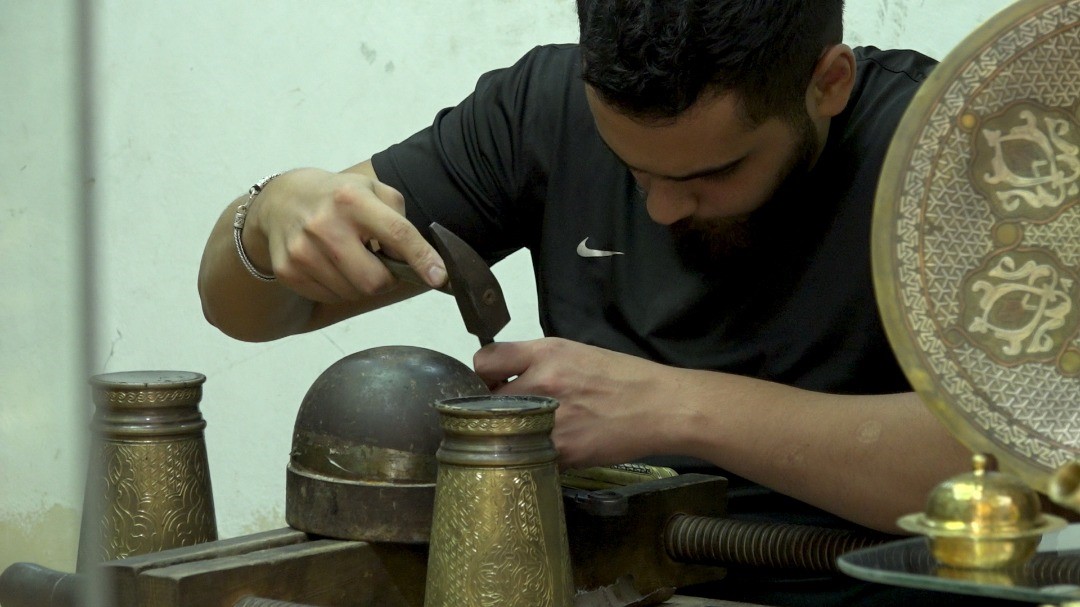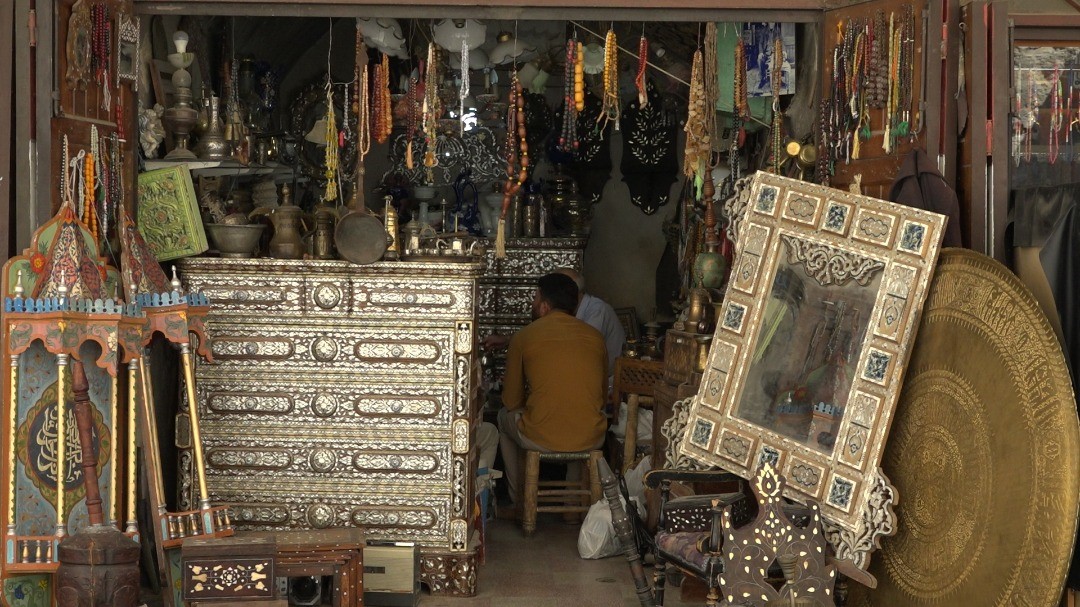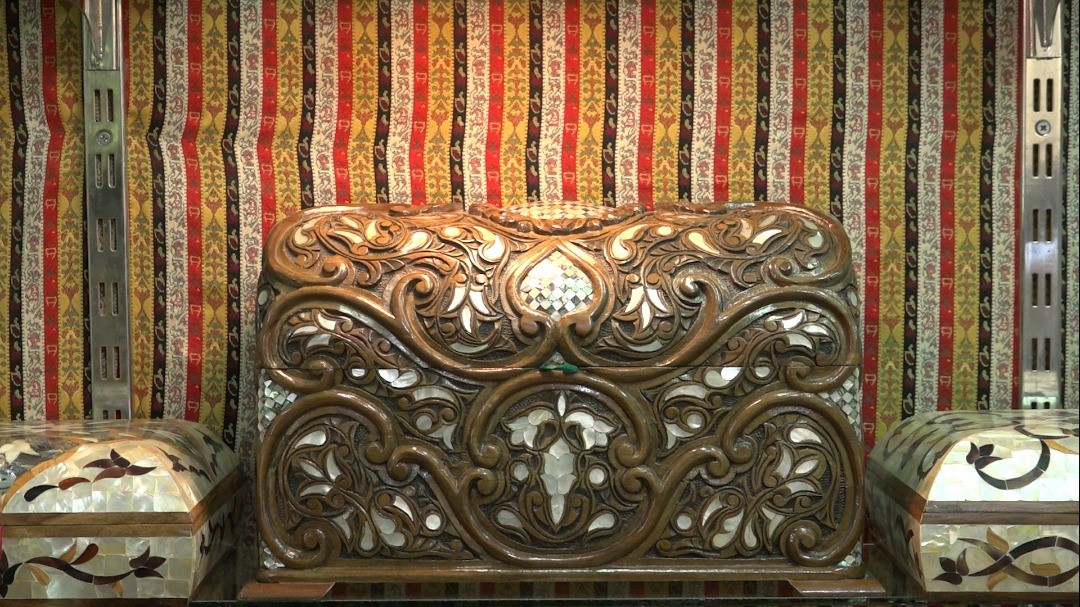
Hamada Jad-al-Sayed handcrafting copper in his workshop in Damascus, Syria. CGTN
Hamada Jad-al-Sayed handcrafting copper in his workshop in Damascus, Syria. CGTN
Craftsmen in Syria are struggling to hang on amid a decade of war, economic hardships and an absence of tourists who used to come from abroad, as well as the country's dependence on tourists from Iran, Iraq and Lebanon, whose movements have been affected by the economic crisis and the COVID-19 pandemic. Meanwhile, traditional handcrafts are facing the threat of extinction.
Hamada Jad-al-Sayed is one of few remaining young craftsmen who work with copper inlaid with silver in the ancient city sector of Syrian capital Damascus.
"There is no demand for handcrafts like before, because the products were depending on tourism as the main market. We used to sell our products very quickly before the war, nowadays we barely sell one-tenth of our products," he said.
"This situation doesn't encourage the new generations to learn these handcrafts. This generation knows that the production process is slow and there are very few sales; I understand them."

Hamada Jad-al-Sayed handcrafting copper in his workshop in Damascus, Syria. /CGTN
Hamada Jad-al-Sayed handcrafting copper in his workshop in Damascus, Syria. /CGTN
Hamada sits in his small workshop, knocking the copper carefully, introducing us to traditional handcrafts that were known in Damascus hundreds of years ago and how they reflect the culture of Islam and the city. He hopes the following generations continue the tradition.

Syrian craftsman Hisham al-Halabi's shop in Tekiyah Sulaymaniya, Damascus, Syria. /CGTN
Syrian craftsman Hisham al-Halabi's shop in Tekiyah Sulaymaniya, Damascus, Syria. /CGTN
Hisham al-Halabi, a craftsman who creates wood products inlaid with seashells, known as "arabesque," works in the ancient site of Tekiya Sulaymaniyah in Damascus where a souk is located. He said the price of essentials and raw materials has hiked, depriving Syrians, whose average income is $25 per month, of being able to afford these products.
"Raw materials are overpriced because we use seashells, which we import due to a lack of local materials in Tartous and Latakia," he said. "Wood also became expensive due to the exchange rate, in addition to diesel costs and labor wages as well as the transporting high cost; it all affected this craft."

Handmade boxes of wood inlaid with seashells offered in the Tekiya Sulaymaniyah handcrafts market in Damascus, Syria. /CGTN
Handmade boxes of wood inlaid with seashells offered in the Tekiya Sulaymaniyah handcrafts market in Damascus, Syria. /CGTN
Before the crisis erupted in 2011, there were over 2,000 craftsmen. The number has decreased to 200 or even less, al-Halabi said.
"The electricity shortage affected our craft, and alternatives are not affordable for all. They had to produce items with lower quality and aesthetics to cope with the low income," he added.
During the last decade, many craftsmen closed their manufacturing workshops, either changing their businesses or leaving the country looking for a better livelihoods and economic conditions.

